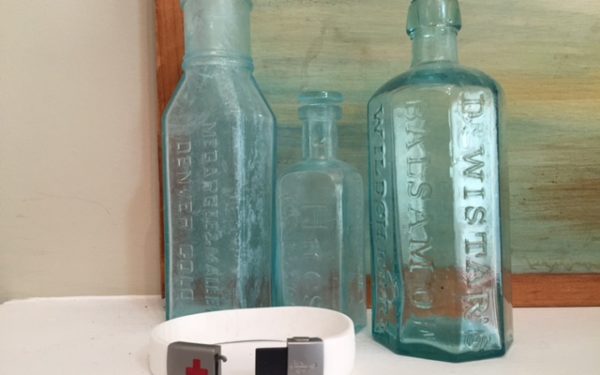1.4 million people, age 65 and older, are treated in emergency rooms every year in this country for injuries due to falls and house fires.
After reading that statistic, I thought about how many of those 1.4 million people could not go home after their injury and ended up in a nursing home or assisted living facility. Then I thought about how many hundreds of thousands of those people could have avoided their injuries by adopting some basic safety standards for their home and lifestyle.
I don’t want to end up as part of that statistical bucket of people going to the ER for falls or house fires that are avoidable. I especially do not want to end up in a nursing home because I fell or a fire started and my injury was due to my own failure to take care of myself. How about you?
Here’s my theory: to avoid unnecessary falls and fires, and to stay in our homes safely, we need to pay attention to our home and how we move around inside that home. It also means being realistic about what support and technology we may need to include in our lives to remain safe at home.
You don’t need to wait until you’re 65 to pay attention to these safety issues, especially if you live alone, live in a more rural setting, or have a chronic illness.
Step 1: SLOW DOWN and PAY ATTENTION
I want to share an embarrassing personal story of how I moved too fast in my everyday life and put my personal safety at risk because this story might help you.
It was the summer of 2009 and I wanted to install a light fixture in my dining room. I called my electrician, Ben, and he came over to work on the installation one afternoon. When I arrived home from work that day Ben met me on the back porch and said he had bad news and worse news. Apparently, part of my 1905 Victorian house was still running on knob and tube wiring, and we are talking the original wiring from 1905, and the house had only one circuit breaker. It was a miracle the house had not burned down around me as I had added new appliances in the kitchen and bathrooms. What started as a simple light fixture installation job turned into a complete electrical rewiring project in my home.
Here’s the kicker. When I went back and looked at my home inspection report from when I bought the home in 2005, this wiring problem had been identified, but I was too focused on the other issues in the report to notice. I was focused on the 26 year old furnace and the water in the basement. I failed to thoroughly read the report in the 30 day rush of going under contract to buy the house and getting to the closing. Not only did moving too fast cost me money, but it could have cost me my life.
Step 2: GET HOME INSPECTIONS
Home Inspections – busting a myth
Most people think that they only need a home inspection if they are buying or selling a home. That’s a myth and a dangerous one for anyone, but especially dangerous if you are elderly.
Experts say you should have a home inspected, at a minimum, every 10 years. Some experts suggest a full inspection every 5 years as a routine practice to give you a better idea of the maintenance needs of your home.
This is an issue if you are renting a home as well. If you are renting a house, ask the landlord when the last home inspection was done, ask to see a copy of the report, if there were deficiencies, ask what was done to correct them before you sign a lease. Many elders downsize and rent instead of owning a home, so know your rights as a renter to basic safety information regarding the property you want to rent.
If the house has crawl spaces and is located in an area that is prone to flooding, or there are sump pumps in the crawl spaces, then you need to be checking those spaces more frequently for water and engaging more frequent inspections.
If Mom and/or Dad have been living in their home for 30 or 40+ years, ask them when the last general home inspection or electrical inspection was done. See if you get blank stares in response to this question, or the standard answer “when we bought the house, I guess,” or the ever popular answer “well, I just don’t know!”
Stop and ask yourself some basic questions like the following. Do the fuses blow routinely when you run 1or 2 appliances? Are there weak boards on the porch or sagging stairs? Are there outlets that don’t work anymore? Does the chimney/roof leak when it rains? Are there outlets that spark when you plug or unplug appliances? Has anyone who is not a certified electrician been working with wiring, or installing new lights indoors or outside at this home?
Do the household appliances have an automatic shut off switch as a safety issue? For example, does the iron automatically shut off if it’s not used for more than a minute or two? Does the coffee maker shut itself off when it’s done brewing? Can you bring in some safer appliances to the household to avoid fires?
If you are determined to live in your home safely, or support an elder living at home, then please take time and address these issues of safety around home inspections and electrical wiring in the home. And learn from my mistake, take the time to fully read and understand the inspection report and take action on the issues found in the inspection.
Furnace Cleaning/Inspection:
When was the last time the furnace was cleaned and inspected? The answer should be a point in time within the past 12 months. If the answer is that neither you nor the elder remember, or you remember it as a date outside of the last 12 months, then this is an issue. Check the furnace itself, there should be a card signed and dated by every professional who has cleaned and serviced the furnace. If the furnace hasn’t been cleaned and inspected in more than a year, then it’s time to get it scheduled for maintenance.
A friend of mine, who shall remain nameless, found herself on a cold, snowy sidewalk in front of her home at 5:30 a.m. this past December while the fire department cleared the smoke from her home. She had just purchased a house in a foreclosure sale, it had been empty for more than a year, but she thought she had plenty of time to get the furnace cleaned. She’s lucky to not have died from carbon monoxide poisoning.
Emergency Off Switch for Furnace:
Does everyone living in the house know where the emergency off switch for the furnace is located? If you have live-in or part time companion or support help in the home, do they know where the off switch for the furnace is located? Does the neighbor who checks on Mom or Dad every day know where the off-switch is located?
Has anyone put duck-tape over the switch? Don’t laugh; duck-tape or electrical tape over the emergency off switch is a frequent sight in the homes I visit. Sometimes elders will put electrical or duck-tape over the emergency switch so they don’t turn the furnace off by mistake, which makes it difficult to turn it off in an emergency. My best advice is to check the emergency off switch, and if there is tape over the switch, remove it.
Fire and Carbon Monoxide Alarms:
Carbon monoxide monitors should be on every floor of the house and in bedrooms. When was the last time you changed batteries on those monitors?
Are the fire alarms working on every level of the house? Do you have a routine day each year for changing batteries in those alarms? Or do you wait until they start beeping to change the batteries?
Planning the Escape Route in case of Fire:
What is the plan for getting out of the house if there is a fire or the carbon monoxide alarm goes off? The person or persons living in the home need a plan and they need to know that plan so well that when they are scared they don’t panic. That means they have to practice the plan.
Here’s the hard part of practicing the fire escape plan, it can raise issues no one is prepared to deal with. If the elder living in the home cannot remember the plan or gets confused easily when trying to follow the plan during practice, that is a signal to you that either more support is needed in the home, or it is time to look at a change in your loved one’s living situation for their own safety.
Step 3: GETTING HELP IN AN EMERGENCY
Stop and ask yourself – if I fell in the house, either upstairs or in the basement, somewhere there is no phone, how would I get help? How long might I be lying at the bottom of the stairs until someone notices that they haven’t seen me and comes to find me?
If you live alone, or spend a large number of hours alone in your home, this is a question you need to ask yourself and find one or more answers to. One of the answer is installing a life alert/life line or medical alert system in your home AND learning how to use it!
I hear story after story of elders who have fallen and were on the floors of their homes for a day or more, in pain, unable to call for help. In one case that I know of, a woman laid on the hardwood floor of her hallway for more than a day after suffering a heart attack and was found only because the mailman happened noticed her mail piling up in her mailbox, he went to the front door and saw her through a window, and he summoned the police and an ambulance.
This is exactly the type of unnecessary suffering I am hoping we can avoid by using technology and having an open discussion on what it takes to be safe as we age at home.
Here is where you have to do the work and make decisions. There is technology to help you, but you have to reach out for it. This is not expensive technology; in fact, my research indicates that medical alert systems in the home run from .85 cents to $1 per day.
There are people who can help you research the local services available in your area for medical alert systems for your safety. The local hospital is a good place to start; sometimes their websites offer information on medical alert programs/devices available in your geographic area. The Area Agency on Aging (AAAs), also sometimes called the Council on Aging, for your county is also a great resource for information on how to safely remain in your home. Any Medicare certified home health agency could also do a home safety evaluation, but this may have to be ordered by your physician to be covered by Medicare.
If you feel overwhelmed by trying to research local resources for medical alert service or home inspection services, you can always take a trip to your local library and ask the staff to help you find information on the internet. Or ask a friend to help you on this quest to make life safer for you at home by finding resources.
If you value remaining in your home as you age, then your personal safety and the safety of your home is your responsibility.
Please, stop and look around you. Take a good look inside and outside your home and see how well you can answer these questions.
- When was the last time you had your home inspected?
- When was the furnace last cleaned and inspected?
- Where is the shut off switch for the furnace?
- Have you changed the batteries on your smoke and Carbon Monoxide monitors in the past 6 months?
- What is your plan for getting out of the house if there is a fire?
- How can you call for help if you need it and are not near a phone?
Stay safe out there, PLEASE!



Recently I spent a lot of time researching life alert programs. Here is what I found.
The 3 that seem to be the most frequently used are medicalalert; lifealert, and alert1/
They have similar features and are all known and respected in our health care community.
Call your local police/fire dept and ask their opinion, they most likely won’t recommend a band but they did tell us that they find them to be “life-savers” and having an emergency lock box is a “really” good thing to have.
Ask the following:
How does your alert program work and how is it different from your competitors?
How many response stations are there?
Will it work when I’m travelling?
Do I need one that has multiple locations across the US?
What is their average wait time? (when they are alerted how long, on average, does it take them to answer an alert?
Will the system work when you are in you are in your yard (what is the range of the alert system)?
Do they charge for installation?
Do you need more than one box in your home? (For example: if you have a small apt there really is no need to have a wall mounted box – if you wear your necklace all the time or is it only close enough to reach if you were to fall – it doesn’t work if you can’t reach it?)
What about a necklace or bracelet? We chose the necklace because you are more likely to take off the bracelet if you are doing dishes or baking or if you wear a watch it can be uncomfortable to have something on your other wrist when you aren’t used to it.
What is the per month charge?
Do you have to sign a yearly contract?
What are extra fees?
Do they come with a free safety door lock box? If the alert system sends police or fire to your home if they don’t have access to your apt/home they break down the door and your home is left open and you have the cost of repair. If they provide and emergency lock box the alert system tell the police/fire dept the code to the box and there is a key in it. It’s like the key boxes Realtors use. All 3 that I contacted give these key boxes free.
After all was said and done we decided that Alert 1 best met our needs.
There is no installation fee – you just plug it between the phone outlet and your land line phone.
We chose a quarterly payment plan which translates into $28/month.
There were no xtra fees and we are using the necklace.
They provided a free emergency lock box.
They have 3 centers nationwide.
They have a AAA rating with the BBB
Like I said all three have their pluses and minuses with the above questions answered by you and the company the decision to chose Medical Alert, Life Alert or Alert 1.
Thank you Cristi! That is great information that you shared and very helpful questions to ask. I think these services will vary based on geography. In our community, for example, hospital volunteers install the systems for anyone who is homebound, at no charge. Did you have help from the Area Agency on Aging/Council on Aging at all? Or your local hospital? Am wondering if you did all the leg work or tapped into other resources, outside of the police department.
Again, thanks for giving everyone the benefit of your excellent research!
This is a wonderful, and very useful, series of articles!
Maybe the key is to start early. With my mom, problems were compounded by her resistance to any help or making any changes. We tried reasoning with her, but perhaps should have made changes without her “permission”.
Thank you, Joyce. Sometimes I send these posts out there into the universe and wonder if they are helpful – so thank you for the feedback! You have hit on a very tough issue I haven’t taken on yet – which is what to do when your parent is not safe in their home or behavior. Having a house inspected is something you could probably get done without “permission” just by being there when the inspector came. Following through on house maintenance might prove difficult unless you or someone in the family can be there.
Installing medical alert is something you could also “do” but the question is would the parent use the system once its installed.
We try to rationalize with elders who simply don’t have the capacity to think logically anymore – and everyone is frustrated in the end. In our family, we relied on nursing staff at my Mom’s independent living/assisted living community to back us up on big items – like when she needed to move to the assisted living side of the community. It was a battle royal, lots of tears were shed, but we got it done.
One day soon I will put together a post on how to deal with help-resistant elders and send it out into universe.
Again, thank you for your feedback!